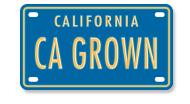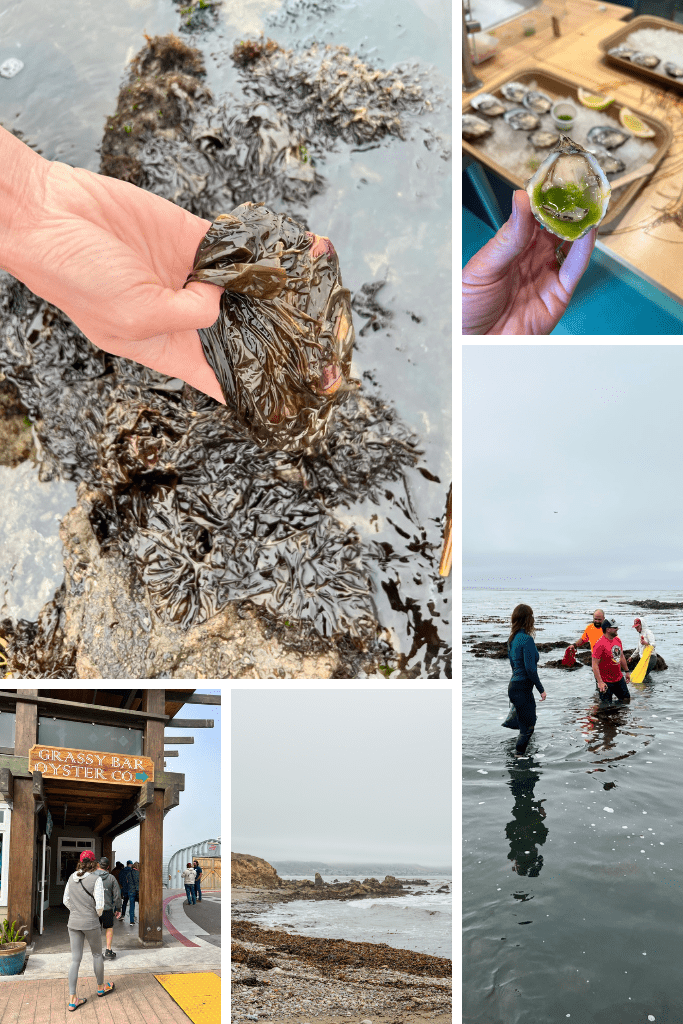Two Sustainable Seafood Companies You Need to Know About
When it comes to adventures, the Golden State has so much to offer. Agritourism is becoming increasingly popular – people want to know where their food comes from and who grows it. You might not think of the ocean when it comes to agritours, but maybe you should! Grassy Bar Oyster Co., an oyster farm in Morro Bay, and KELPFUL, a wild-foraging seaweed operation, are two Central Coast companies that you can visit who offer a taste of sustainable seafood.
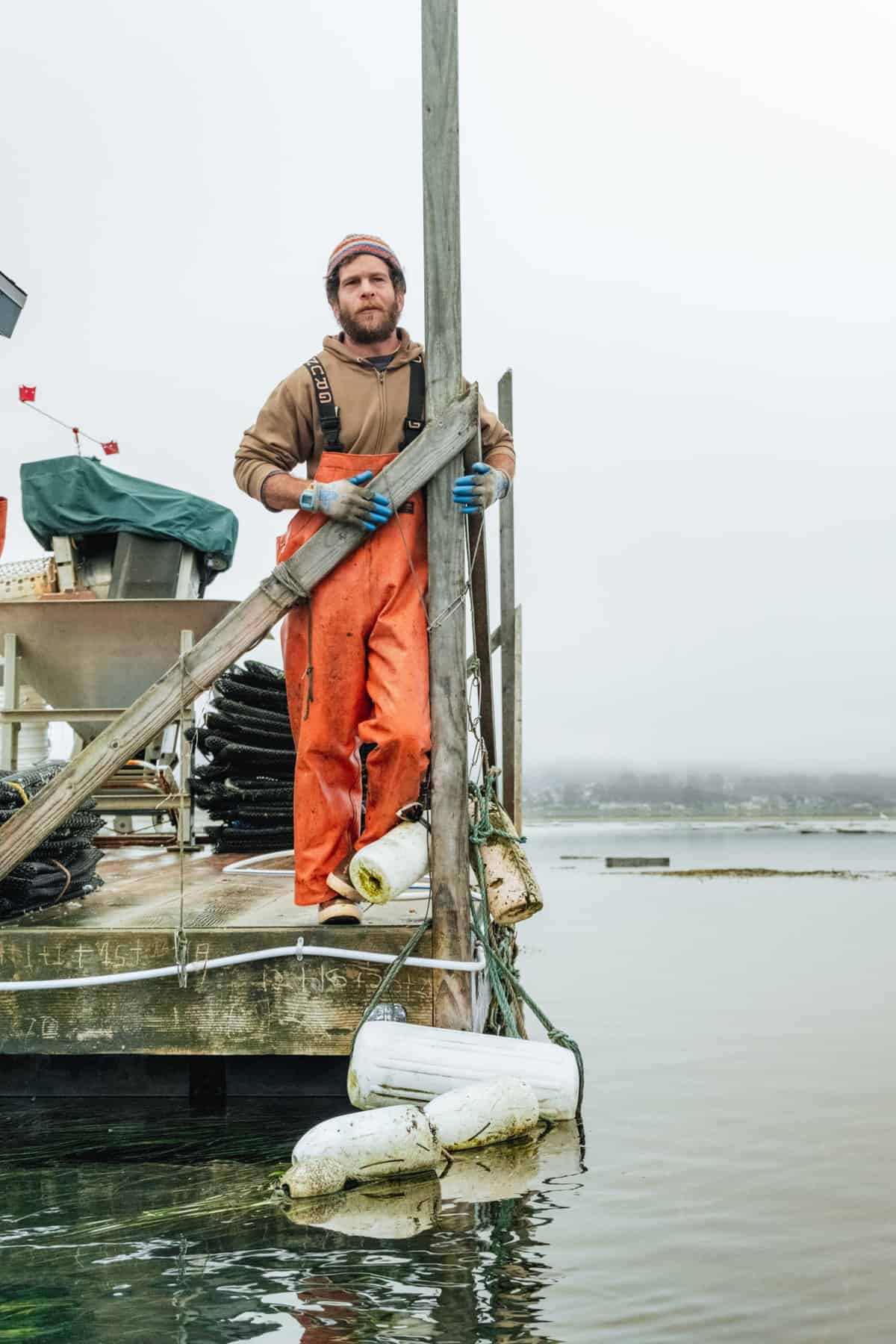
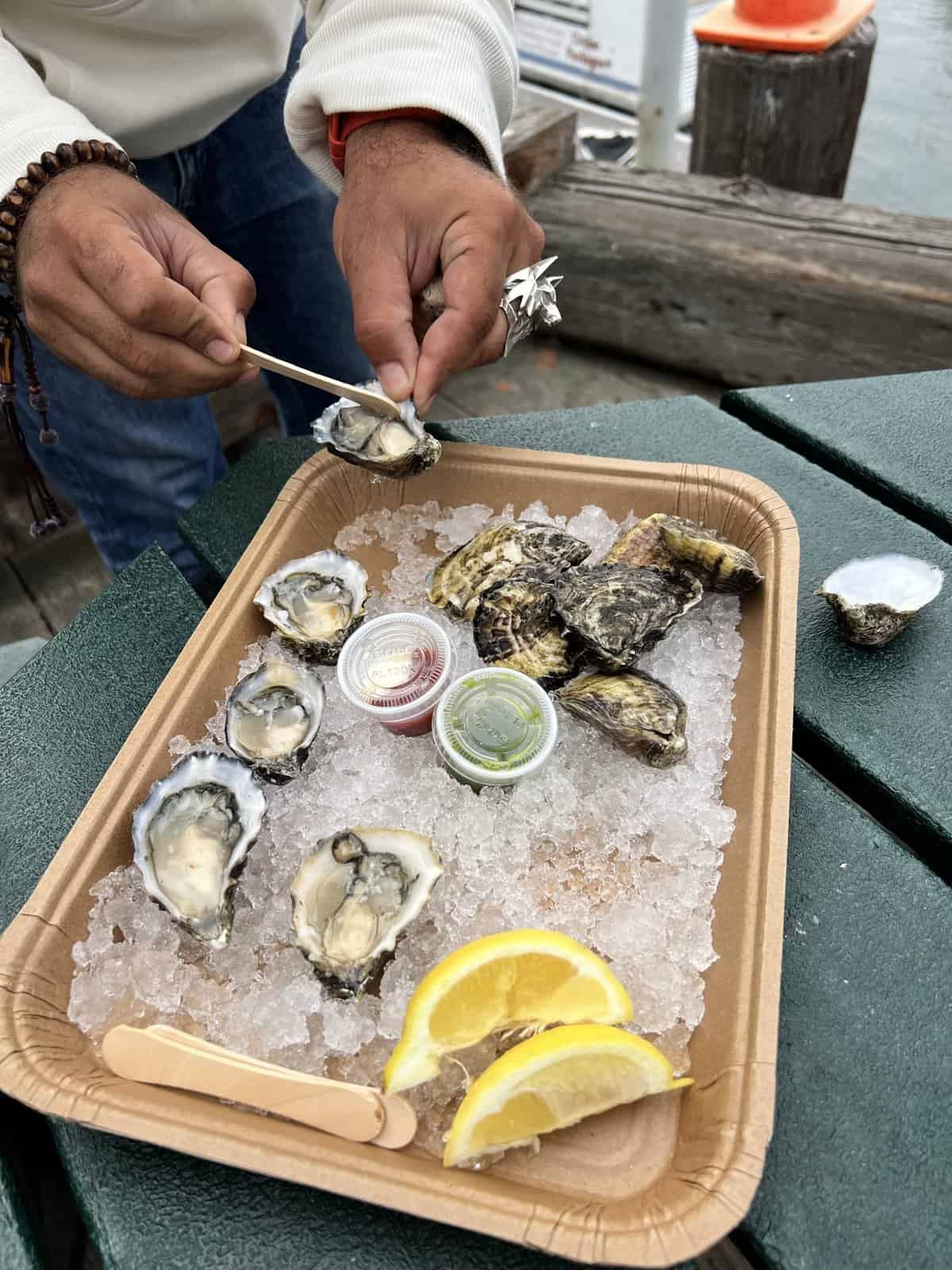
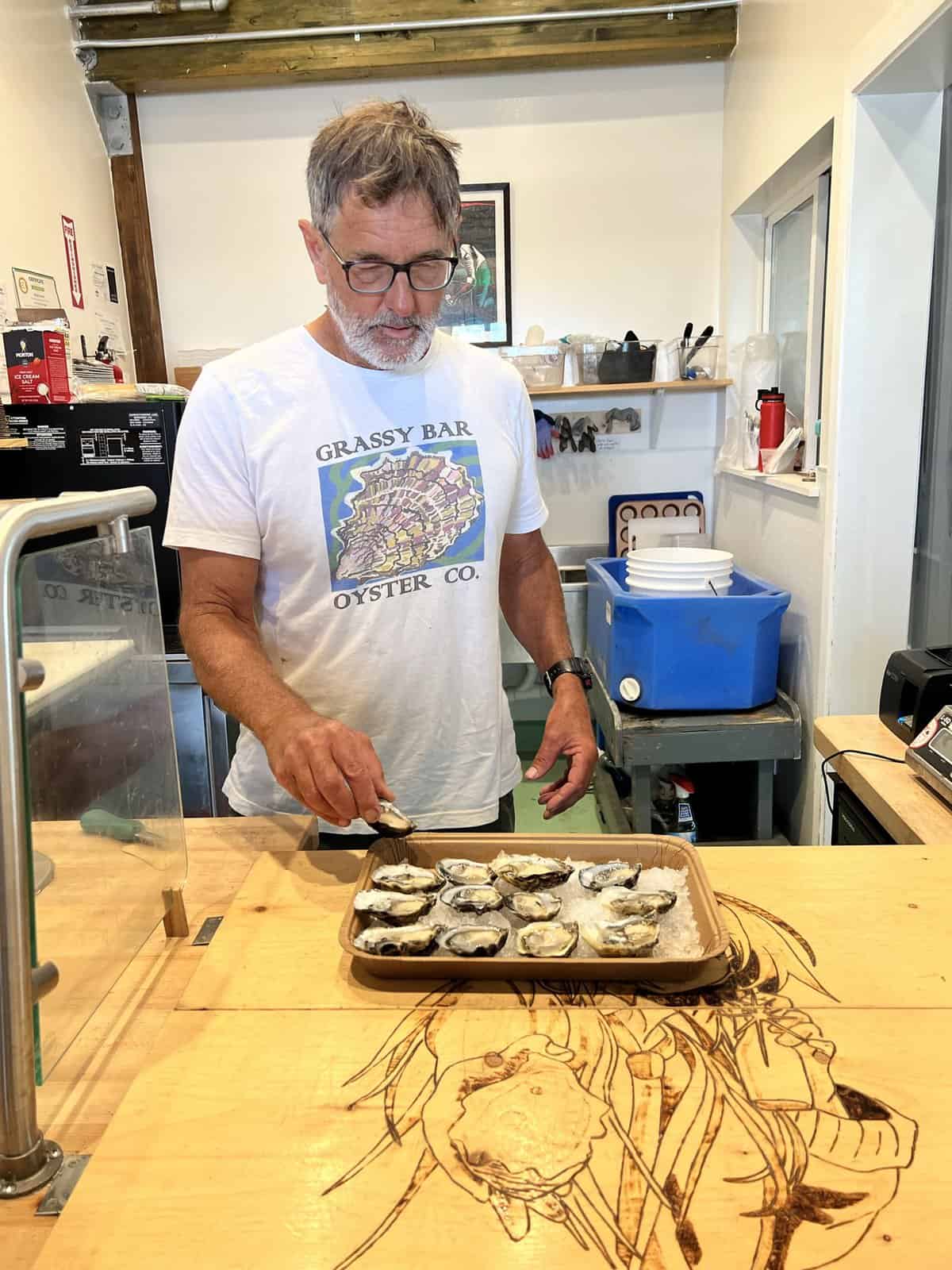
Grassy Bar Oyster Co. – Sustainable Seafood from Morro Bay
George Trevelan is an expert oyster shucker – and he should be. His family has owned and operated the Grassy Bar Oyster Co. since 2009. Located off the shores of Morro Bay, their 50-acre farm produces some of the most delicious oysters in the Golden State.
The family tends to about a million oysters each year, grown in thick mesh bags in the Morro Bay estuary. Some of the bags are attached to heavy cables so they can be tumbled by the tide to produce smaller, prettier oysters. Other oysters are grown in bags on the ocean floor which produces larger, sturdier oysters ideal for grilling. The former are preferred by restaurants and the latter by consumers. The oysters grown on the ocean floor must be manually flipped by the Grassy Bay team, making them more labor intensive.
The Morro Bay estuary has long been an ideal location for oyster farming. Back in the 1930s, about 1,600 acres of oysters were grown there. It was a comparatively low-tech operation, with oyster seedlings being thrown onto the plentiful sandbars. During WWII, it was the largest oyster operation in the U.S. But by the 1980s, production had dwindled and spread to many other parts of California including Humboldt Bay, Drakes Estero, and Tomales Bay.
As population has increased over the years, the water quality in Morro Bay has deteriorated. Some of the issues are attributable to the lack of wastewater treatment facilities in the region. Other pollution arises from increase boating activity which led to a die-off of the vital eel grass which not only provides an important habitat for marine life, but also improves overall water quality. Eel grass produces both food and oxygen and captures carbon and other greenhouse gasses. It also provides shelter to young fish and invertebrates, food for waterfowl and turtles, and spawning surfaces for some types of fish.
Today, with the addition of two nearby wastewater treatment facilities, improved boater education, and the smallest of measures such as encouraging pet owners to pick up their dog’s solid waste, the eel grass has been restored. The waters of the Morro Bay estuary are clean and healthy, and the marine life population is there to prove it.
Oysters are an environmentally friendly food and a great source of Omega-3 fatty acids. According to the Monterey Bay Aquarium’s Seafood Watch, whose standards and recommendations are pillars of the sustainable seafood movement, oysters are “the best of the best” on their Super Green List of seafood recommendations. Oysters are not just a healthy, sustainable food source -they also play a critical role in keeping the estuary free from pollutants because they are filter feeders. To eat, they pump large quantities of water through their systems to feed on tiny phytoplankton.
The healthier waters mean that there are more harbor seals and sea otters looking to the oyster farm for an easy snack. Growing the oysters in strong mesh bags helps to protect them from predation. However, like winegrapes, it’s important for oysters to have some environmental stress. Time spent in and out of water as the tides change strengthens the oysters, forcing them to open and close their shells. Trevelan says that the tumbling action of the bags can also chip outer shells which encourages new shell growth, a deeper cupping of the shell, and a meatier, juicier end product.
Grassy Bar, like most other Golden State oyster farms, raises Pacific oysters which originate in Japan. They typically source their “seedlings” from hatcheries in Humboldt, Washington, or Kona, Hawaii that have been approved by the Department of California Fish and Wildlife. Young oysters are grown and kept safely in containers under their dock for about six months before they are moved to the mesh bags further out in the estuary.
The flavor of oysters can change a bit depending on the phytoplankton they eat, the quality of the water, and the water temperature. Oyster farmers like to call this “merroir” – the ocean counterpart to “terroir” – which refers to the impact of soil and climate on the flavor and texture of wines. According to Trevelan, Grassy Bar oysters in particular have a slightly sweet underpalate with a green melon rind finish. If you want a taste of Grassy Bar oysters, they are found at several Northern, Central and Southern California fish markets, or in their own retail location. Obviously, we recommend serving them with a California sparkling wine or crisp white such as Sauvignon Blanc. And if you want to see the oyster farm in operation, take a kayak tour to get a glimpse of the action.

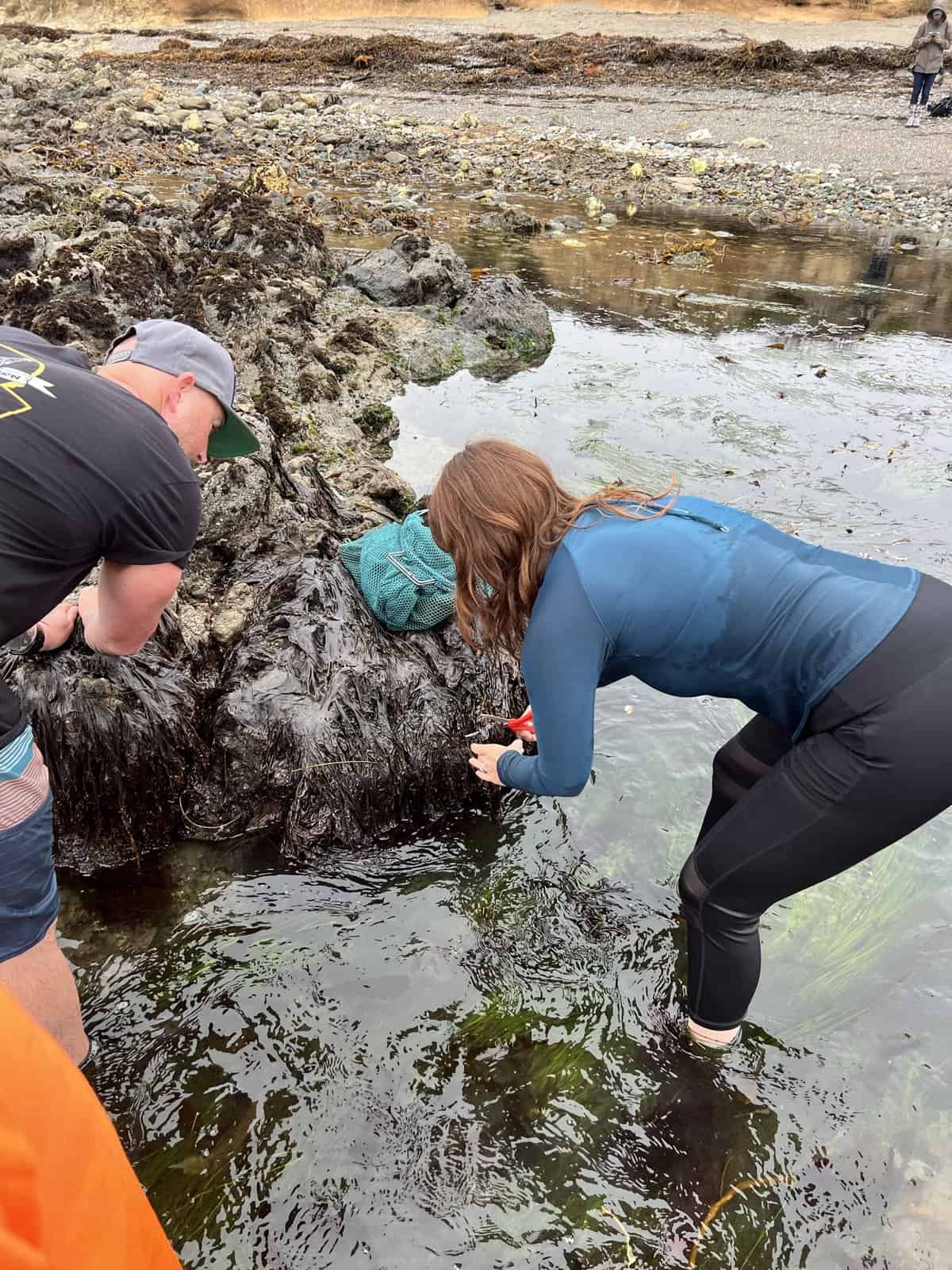
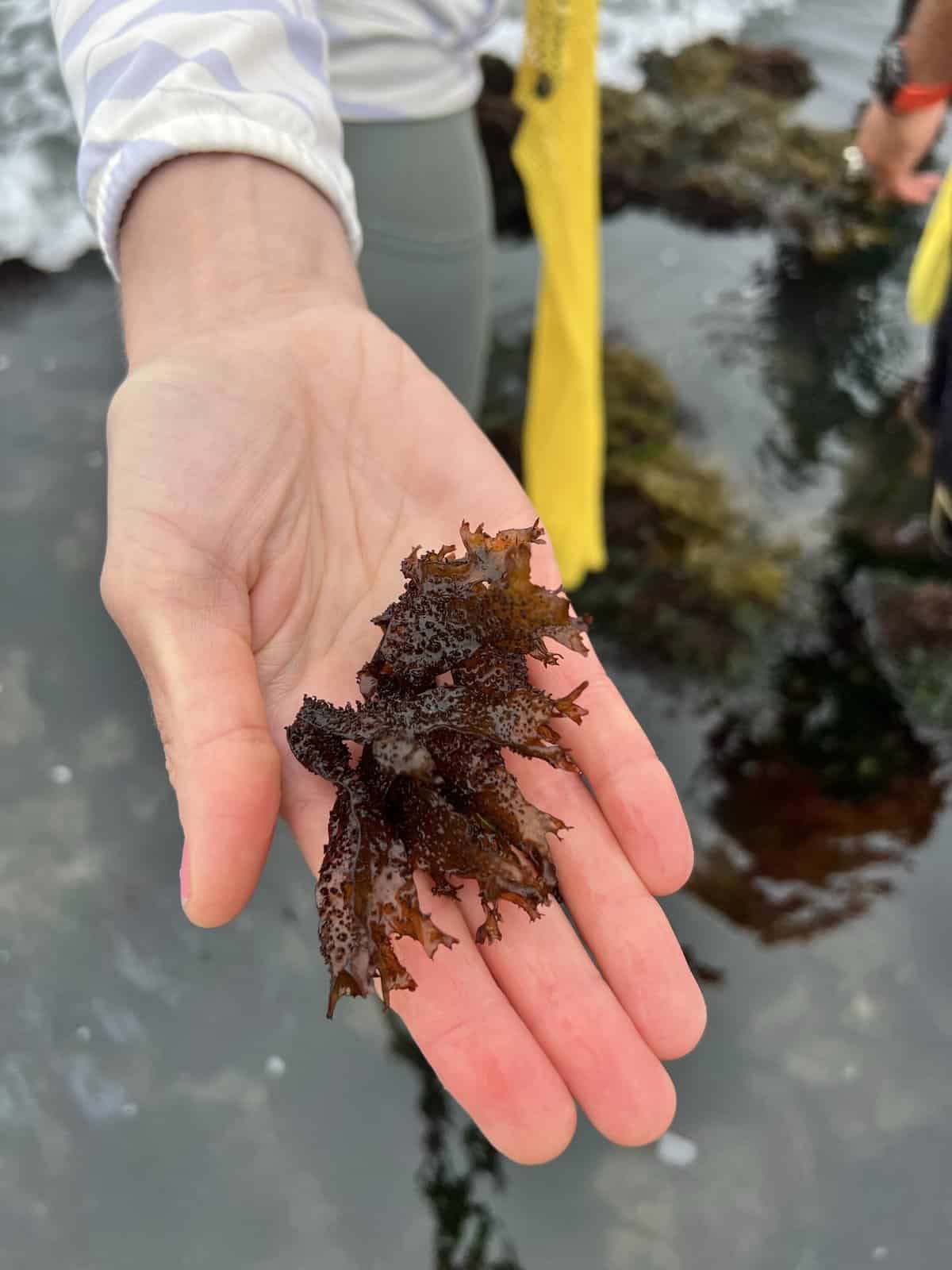
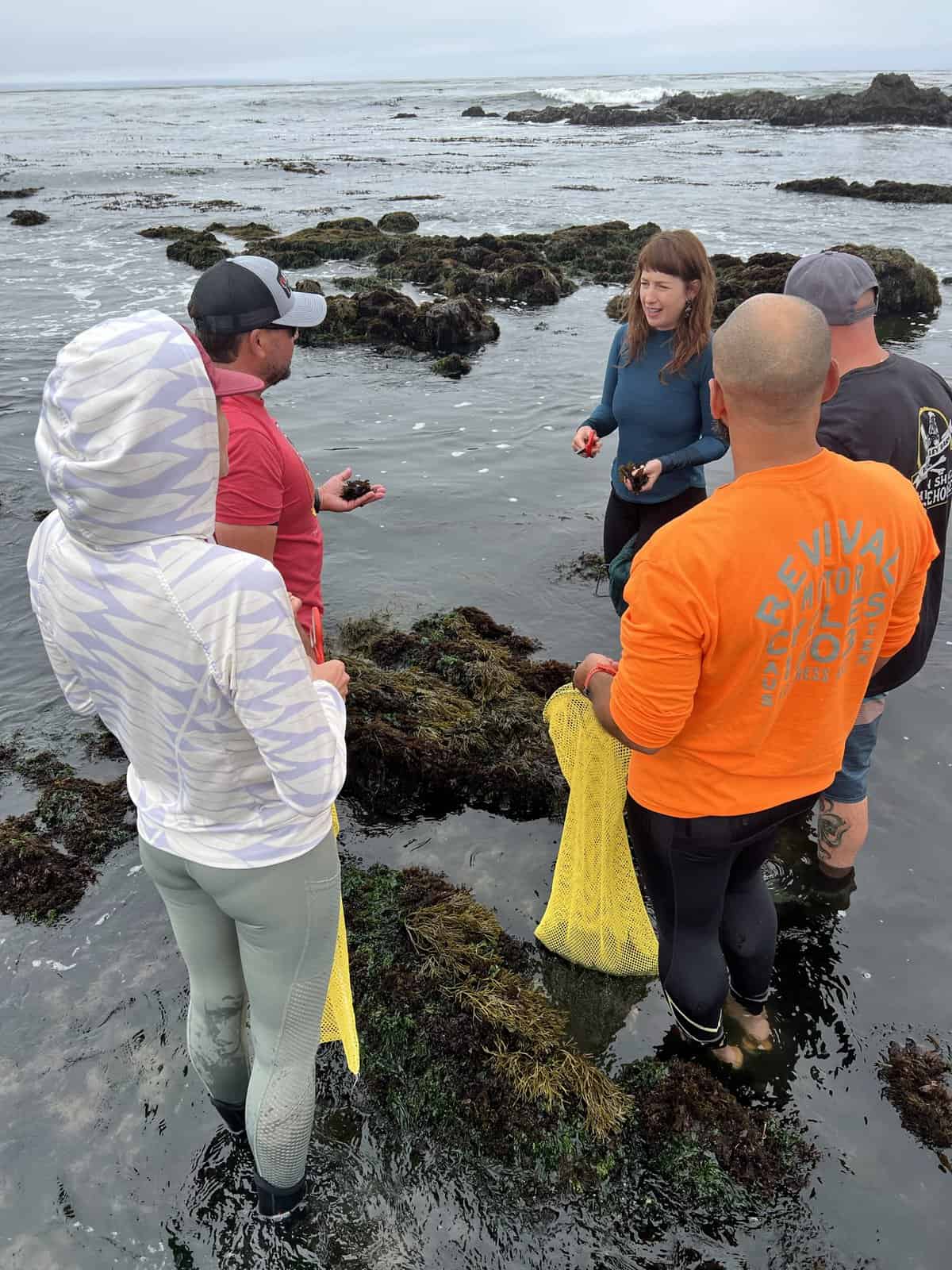
KELPFUL
KELPFUL is a small, worker-owned seaweed-harvesting cooperative headed up by CEO Melissa Hanson. She’s always loved the ocean and has long had a dream of farming seaweed. In 2020, Hanson and her business partners Jules Marsh and Austin Rogers launched the business and now offer seaweed-based products for both culinary and self-care applications. Hanson has a deep appreciation for the ocean, the natural environment, and the Chumash and Salinan peoples who began harvesting seaweed in the Central Coast about 14,000 years ago. She and her team ensure that they are harvesting both respectfully and sustainably.
All the seaweed harvesting is done by hand. On harvest days, wetsuit-clad workers head out into the beautiful intertidal zones of Caycos and San Simeon. Carefully stepping their way through slick rocks, they snip kombu, giant kelp, nori and other species with sharp scissors. They place their bounty in large mesh bags, each trip netting about 100 pounds of seaweed. According to Hanson, that’s only a tiny fraction of the total biomass in one location.
After harvesting, the seaweed is locally washed and dehydrated before being brought to the KELPFUL production facility in San Luis Obispo where it is toasted and milled. Some of their most popular products are their kelp sprinkles which they recommend dusting on practically everything including popcorn, avocado toast, rice, mac & cheese or eggs. They also offer self-care items such as bath bombs, facial masks, and soap.
Seaweed is a marine micro-algae that is extremely nutrient dense. It’s beneficial both as a food, and when applied to the skin. Not only does seaweed contain a variety of vitamins and minerals including iodine, folate, and magnesium, it is also high in dietary fiber. Hanson says that because seaweed doesn’t have roots and leaves like land-based plants it absorbs nutrients through every cell making it 6-10 times as nutrient dense as other plants.
At KELPFUL, Hanson and her team are able to harvest some of the seaweed regeneratively, which means the way they harvest encourages new growth. In general, seaweed is incredibly fast growing and is considered a renewable resource. There are more than 20,000 species of seaweed to choose from, all with unique colors, textures and flavors.
Whether or not you could actually call seaweed a “sustainable seafood” is up for debate. However, Hanson likes to say “This is What Climate Resilience Tastes Like” because seaweed is abundant, renewable, fast-growing, and needs no fresh water or fertilizer to grow. It also sequesters carbon and nitrogen, improving the marine ecosystems where it grows.
If you are interested in learning how to wild-harvest seaweed yourself, KELPFUL offers guided adventures and teach you how to identify and harvest some of their favorite varieties of seaweed. Learn more by visiting their website.
Article by Alison Needham. Images by Alison Needham and Leah Judson.
